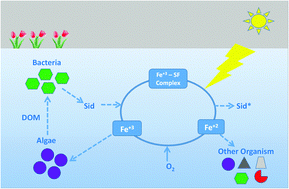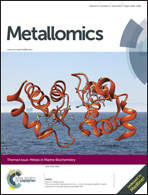Evaluation of photo-reactive siderophore producing bacteria before, during and after a bloom of the dinoflagellate Lingulodinium polyedrum†
Abstract
Evidence is increasing for a mutualistic relationship between phytoplankton and heterotrophic marine bacteria. It has been proposed that bacteria producing photoactive iron binding compounds known as siderophores could play an important role in such mutualistic associations by producing bioavailable iron utilizable by phytoplankton and in exchange receive autotrophically derived DOM. In order to understand the potential role photoactive siderophores might be playing in bacterial–algal mutualism or marine biogeochemistry in general, it is important to be able to detect and quantify their presence in various environments. One approach to accomplish that end is to make use of high sensitivity genomics technology (qPCR) to search for siderophore biosynthesis genes related to the production of photoactive siderophores. In this way one can access their “biochemical potential” and utilize this information as a proxy for the presence of these siderophores in the marine environment. In this report we studied the correlation of the presence of bacteria producing one of the three photoactive siderophores relative to total bacterial and dinoflagellate numbers from surface water at the Scripps Pier before, during, and after fall bloom of the dinoflagellate Lingulodinium polyedrum. We believe that these findings will aid us in gauging the importance of photoactive siderophores in the marine environment and in harmful algal bloom dynamics in particular.

- This article is part of the themed collection: Metals in marine biochemistry

 Please wait while we load your content...
Please wait while we load your content...